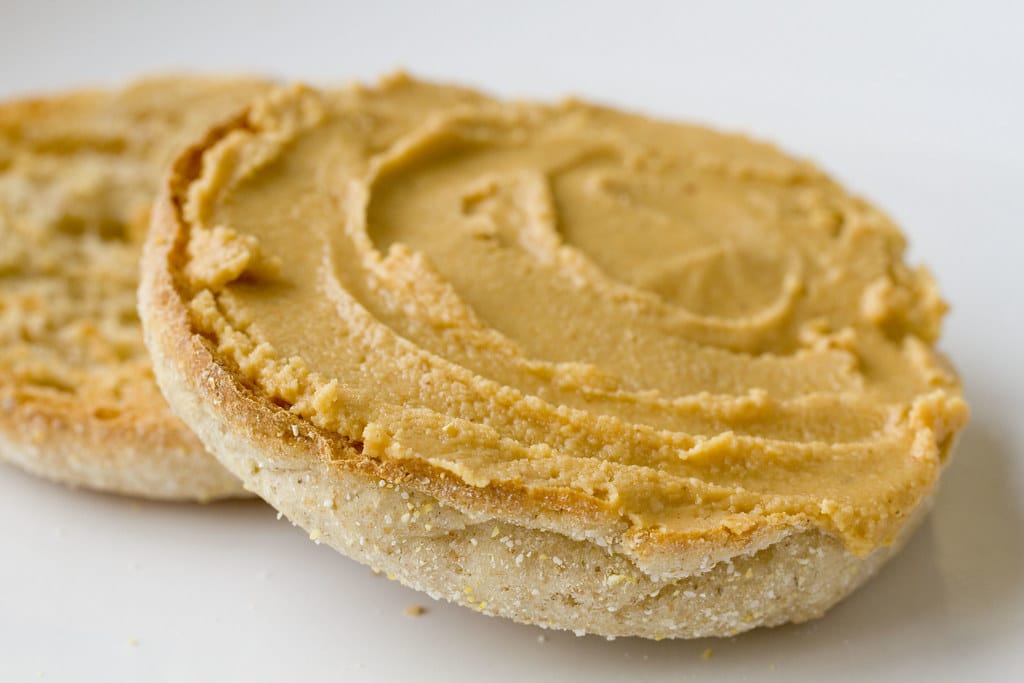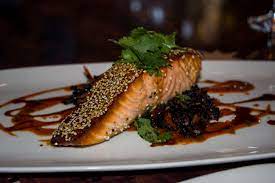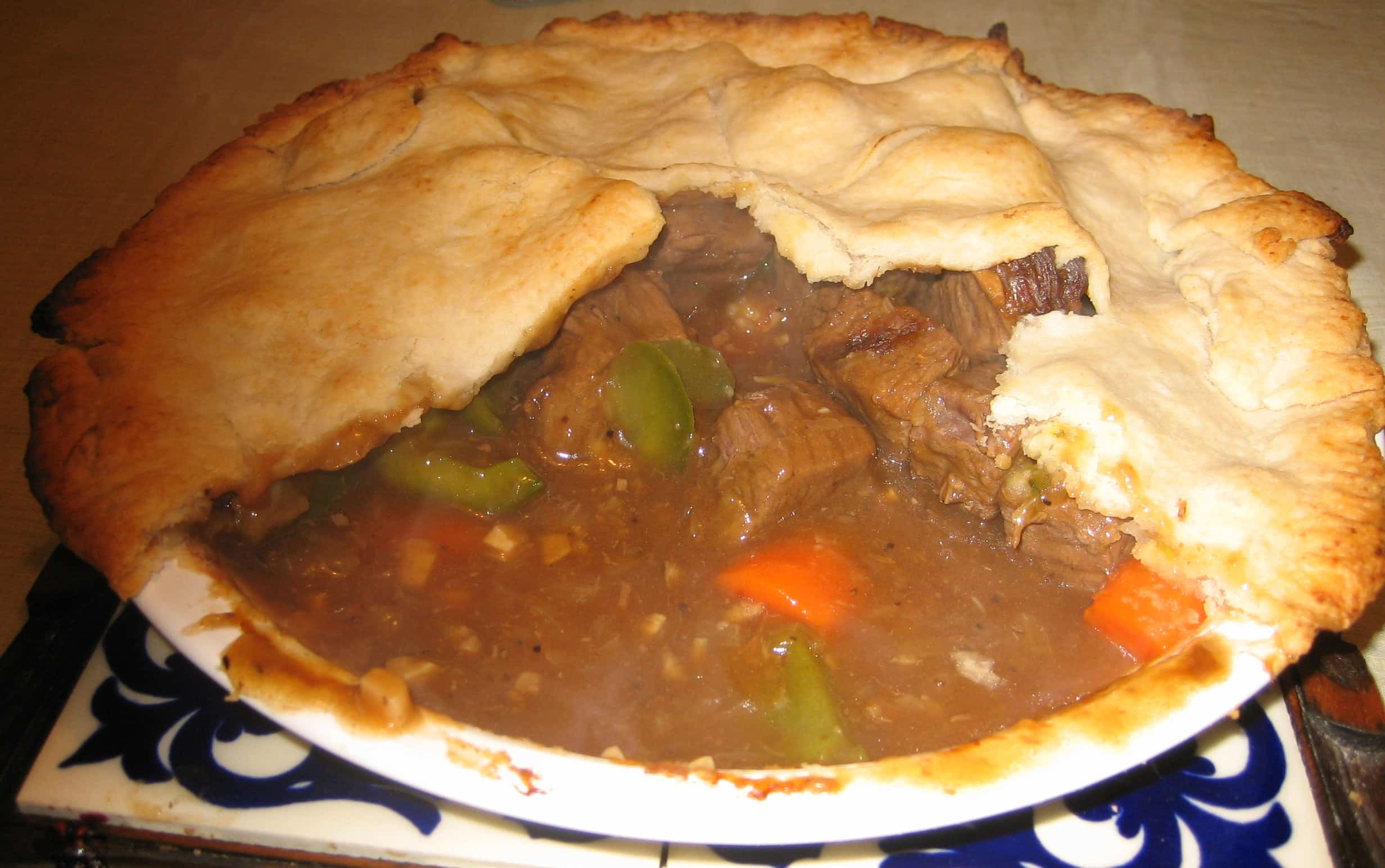- How to Make Ramen in the Microwave - November 29, 2025
- How to Cook Sweet Potatoes in Microwave - November 29, 2025
- Slow Cooker Potatoes Recipe - November 29, 2025
Kiwi hits your mouth with a juicy zing that wakes up every taste bud like a splash of cool water on a hot day. Kale feels like a green powerhouse, loaded with vitamins that blast your energy sky-high. Kimchi adds a fiery Korean punch that keeps your belly running smooth as clockwork. Kumquats are tiny citrus bombs you eat whole, exploding with sweet and tangy fun. Texas kolaches, soft pastries filled with yum, brighten any meal like a ray of sunshine. These foods turn plain eating into a flavor adventure you won’t forget. The next bites will show why these tasty treats belong on your plate—don’t miss out on the delicious story they tell.
See the whole food dictionary!
Kabob
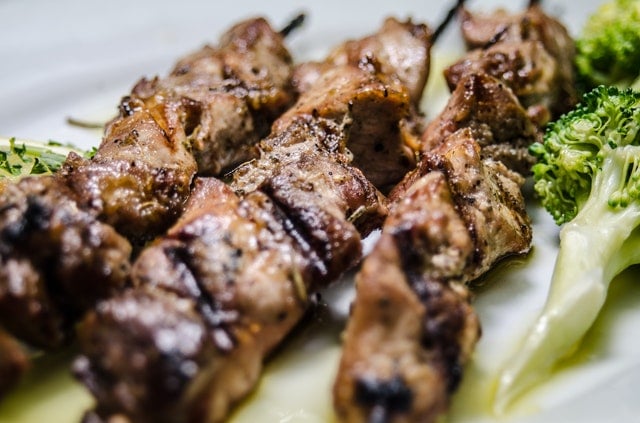
Kabob is an Iranian, Afghan, Middle Eastern, Eastern Mediterranean, and South Asian dish of pieces of meat, fish, or vegetables roasted or grilled on a skewer or spit originating either in the Eastern Mediterranean, or the Middle East, before spreading worldwide.
In the Middle East, however, kabob refers to meat that is cooked over or next to flames; large or small cuts of meat, or even ground meat; it may be served on plates, in sandwiches, or as dürüm.
Kachoomar
A mass of mixed ingredients reduced to a soft pulpy state by beating or pressure; a mass of anything in a soft pulpy state.
Specifically (Brewing), ground or bruised malt, or meal of rye, wheat, corn, or other grain (or a mixture of malt and meal) steeped and stirred in hot water for making the wort.
This small side dish accompanying rice dishes
Kaiserfleisch
Kaiserfleisch is a smoked pork belly found in Trentino-Alto Adige.
It has a dry consistency and can be eaten as it is, without additional cooking.
It is often served with sauerkraut in this region or is used to flavor other dishes in the same way that pancetta might be.
Kale
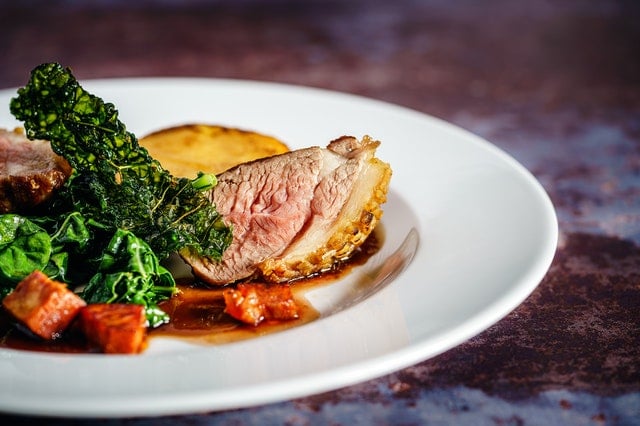
Kale, also known as leaf cabbage, is a variety of cabbage native to the eastern Mediterranean and Western Asia.
This vegetable is cultivated for its edible green leaves.
Kale is more than 80 % made of water and it is highly nutritious, containing a range of vital vitamins and minerals.
It is the healthiest when consumed raw, but it can also be steamed, boiled, or cooked.
Kanafeh
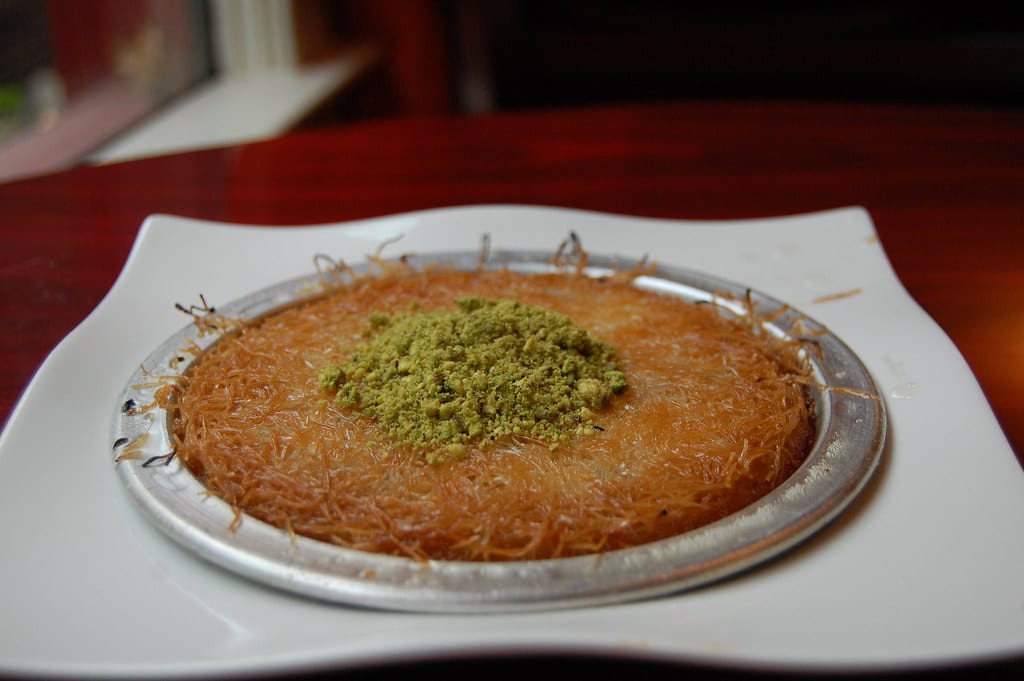
Middle Eastern dessert composed of shredded filo pastry layered with soft cheese or nuts and topped with another layer with pastry.
While still hot, kanafeh is generously poured with sugar syrup.
This is a traditional specialty of Turkey, Levant, Egypt, the Caucasus, and the Balkans, where it is also known as kunāfa, künef.
Sugar syrup is often replaced with rose water or orange blossom water.
Kanafeh is usually served topped with ground pistachios.
Kasha
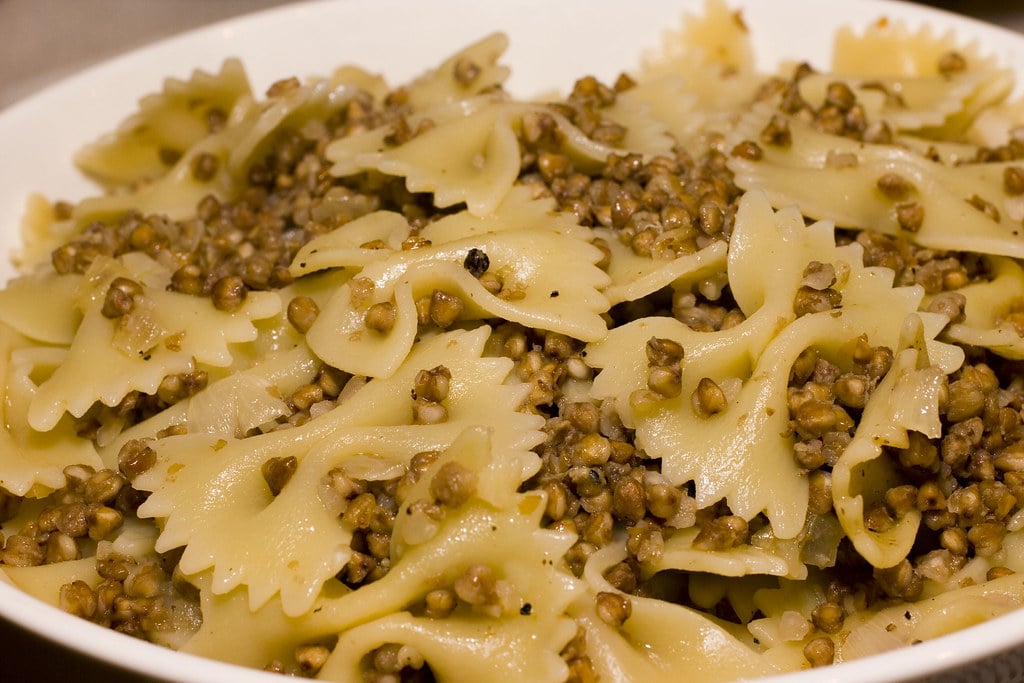
Kasha is a type of cereal or porridge made from buckwheat groats that have first been roasted, then soaked, and finally slowly simmered until soft.
Roasting the groats brings out strong, nutty flavors, and cooked kasha has a firm texture and slightly gummy consistency.
Kasha is a common dish in Eastern Europe, and kasha varnishkes is a traditional Jewish preparation that combines cooked kasha with bowtie pasta and onions.
Kashkaval
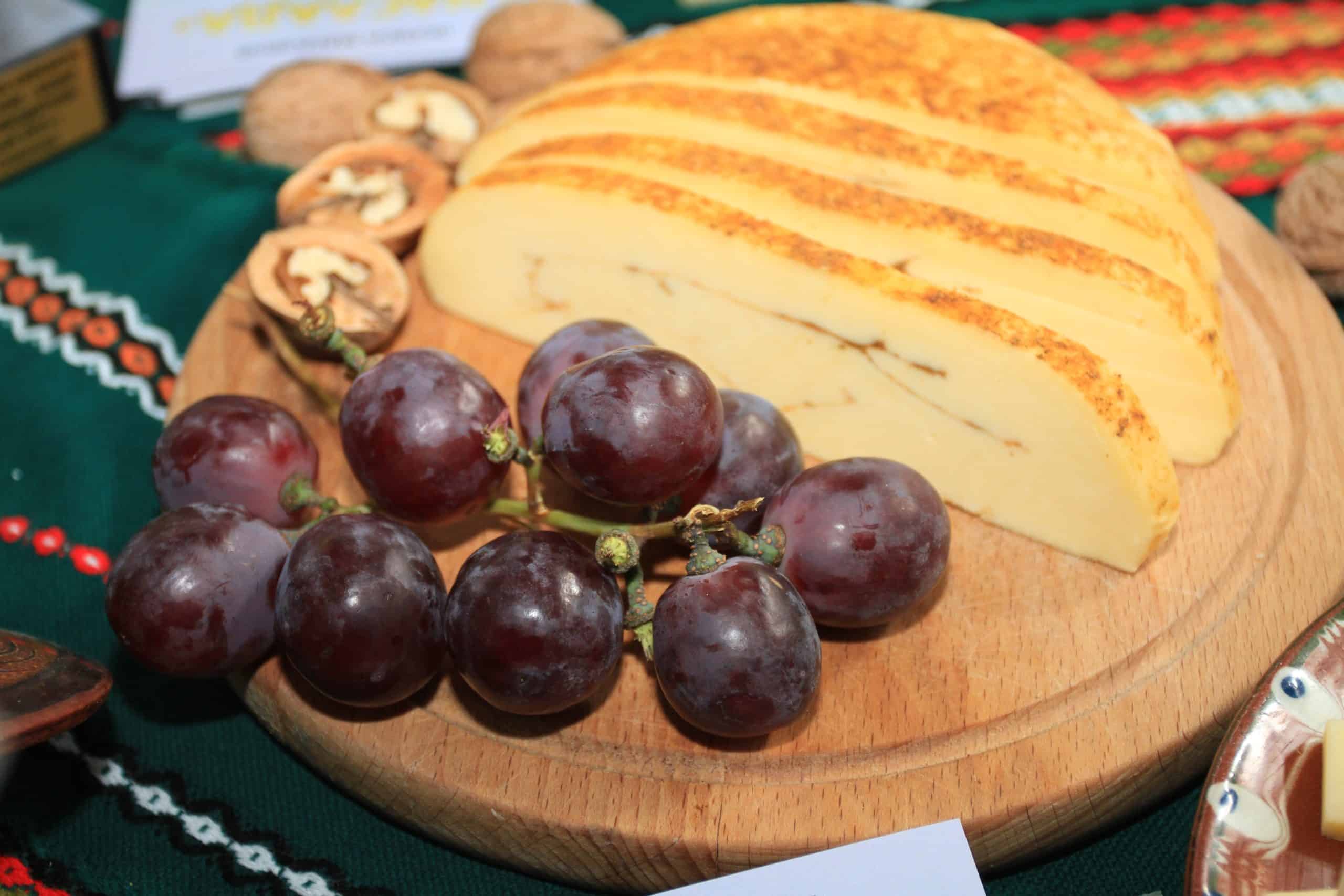
Kashkaval is a type of cheese made from cow’s milk, sheep’s milk, or both.
The name is derived from the Italian caciocavallo.
In Albania, Bulgaria, North Macedonia, Serbia, and Romania, the term is often used to refer to all orange cheeses (or even any cheese other than sirene).
In English-language menus in Bulgaria, “кашкавал” is translated as “orange cheese” (whereas sirene is usually translated as “white cheese” or simply “cheese”).
Kava
Kava is a crop of the Pacific Islands.
The name kava is from Tongan and Marquesan, meaning ‘bitter’.
The root of the plant is used to produce a drink with sedative, anesthetic, and euphoriant properties.
Its active ingredients are called kavalactones.
A systematic review done by the British nonprofit Cochrane concluded it was likely to be more effective than a placebo at treating short-term anxiety.
Moderate consumption of kava in its traditional form, i.e., as a water-based suspension of kava roots, has been deemed to present an “acceptably low level of health risk” by the World Health Organization.
However, consumption of kava extracts produced with organic solvents, or excessive amounts of poor-quality kava products, may be linked to an increased risk of adverse health outcomes, including potential liver injury.
Kebab
A group of Middle Eastern dishes made from cooked or grilled meat.
Most commonly, it includes small pieces of lamb, beef, or chicken cut or ground and grilled on a skewer.
In some varieties, cut vegetables are placed on kebab skewers as well.
The most popular varieties are shish kebab (meat grilled on a skewer), Chinese Chuan (pieces of meat, usually lamb, roasted on a skewer), and doner kebab (meat cooked on a vertical rotisserie).
Kedgeree
Kedgeree is a dish consisting of cooked, flaked fish (traditionally smoked haddock), boiled rice, parsley, hard-boiled eggs, curry powder, butter or cream, and occasionally sultanas.
The dish can be eaten hot or cold.
Other fish can be used instead of haddock such as tuna or salmon, though these are not traditional.
In India, khichari is any of a large variety of legume-and-rice dishes.
These dishes are made with a spice mixture designed for each recipe and either dry-toasted or fried in oil before inclusion.
This dish moved to Victorian Britain and changed dramatically.
Kefir

A milk beverage originated in the North Caucasus.
Kefir is produced through milk fermentation using kefir grains.
This process results in a sour and creamy yogurt-like drink.
Traditionally, it is made from goats, cow’s or ship’s milk.
Kefir is considered a more powerful probiotic than yogurt and it is high in B vitamin, calcium, and proteins.
Key lime pie
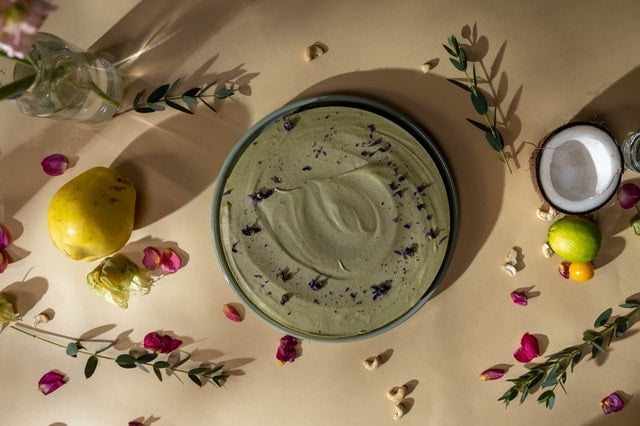
Key lime pie is an American dessert pie made of Key lime juice, egg yolks, and sweetened condensed milk.
It may be served with no topping, topped with a meringue topping made from the egg whites, or with whipped cream; it may be cooked in a pie crust, graham cracker crust, or no crust.
The dish is named after the small Key limes, which are more aromatic than the common Persian limes, and which have yellow, not green, juice.
The filling in a Key lime pie is also yellow, largely because of the egg yolks.
The filling is made by simply mixing the ingredients without cooking: the proteins of the egg yolks and condensed milk and the acidic lime juice curdle, thickening the mixture without baking.
Today, key lime pies are usually baked to pasteurize the eggs and thicken the filling further.
Ketchup
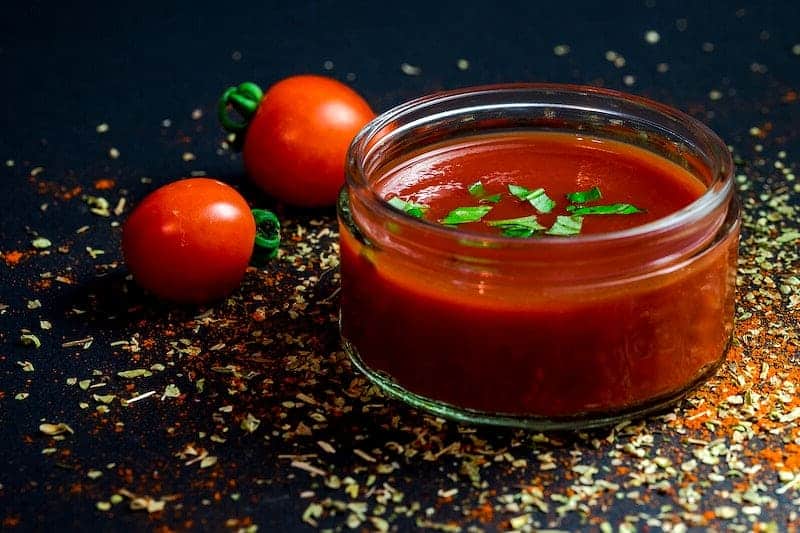
Ketchup is a table condiment or sauce.
The unmodified term (“ketchup”) now typically refers to tomato ketchup, although original recipes used egg whites, mushrooms, oysters, grapes, mussels, or walnuts, among other ingredients.
Tomato ketchup is a sweet and tangy condiment made from tomatoes, sugar, and vinegar, with seasonings and spices.
The spices and flavors vary, but commonly include onions, allspice, coriander, cloves, cumin, garlic, and mustard, and sometimes include celery, cinnamon, or ginger.
Tomato ketchup is most often used as a condiment to dishes that are usually served hot and maybe fried or greasy: french fries and other potatoes, hamburgers, hot dogs, chicken tenders, tater tots, hot sandwiches, meat pies, cooked eggs, and grilled or fried meat.
Ketchup is sometimes used as the basis for, or as one ingredient in, other sauces and dressings, and the flavor may be replicated as an additive flavoring for snacks, such as potato chips.
Ketembilla
Dovyalis hebecarpa, with common names Ceylon gooseberry, ketembilla, and kitambilla, is a plant in the genus Dovyalis, native to Sri Lanka and southern India.
The fruit is often eaten fresh or made into jam.
Some cultivars have been selected for being thornless (making harvesting easier) and for larger fruit.
Apart from Ceylon gooseberry, it is also known as Ketembilla, Kitembilla, kei apple, Puerto Rican cranberries, and tropical apricots.
The tree takes about 2-3 years to fruit.
Fruit is quite juicy, extremely acidic, and is mostly used for making preserves, jelly, jam, and juice.
Kettle corn

Kettle corn is a sweet variety of popcorn that is typically mixed or seasoned with light-colored refined sugar, salt, and oil.
It was traditionally made in cast iron kettles, hence the name, but in modern times other types of pots and pans are used.
In the pantheon of popcorns, kettle corn sits somewhere in between plain popped corn and caramel corn.
It’s lightly golden — more or less so depending on the amount of sugar you use — and salty-sweet.
It has a crisp crunch from the sugar coating but won’t stick to your teeth the way caramel corn sometimes does.
Key Lime

Small, yellow-green citrus fruit.
It is a citrus hybrid native to Florida, made of Citrus micrantha and Citrus medic.
Key lime is smaller than lime, contains more seeds, and has a much stronger flavor.
Its juice is sour and tart, but it gives a nice fragrance to the key lime pie, a dessert made of crust, egg custard, and topped with meringue.
Kidney Bean
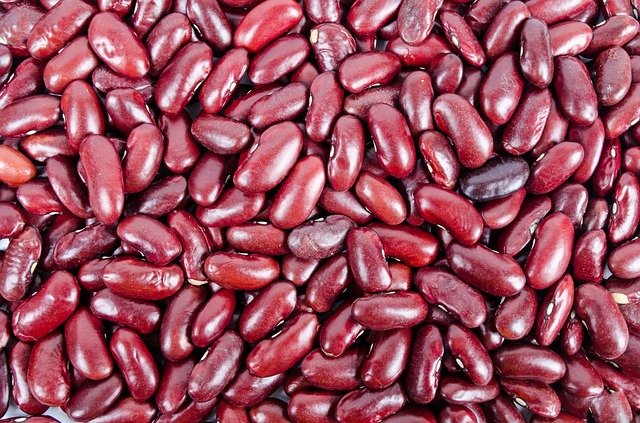
Kidney-shaped type of common beans, used in a variety of meals, from chilis to salads.
Kidney beans are very soft and creamy when cooked.
They are a good source of fiber, phosphorus, magnesium, iron, zinc, and vitamins B and K.
The most common type of these beans is red-colored, but they come in a variety of colors and patterns (white, black, purple, speckled, or stripped).
Kielbasa
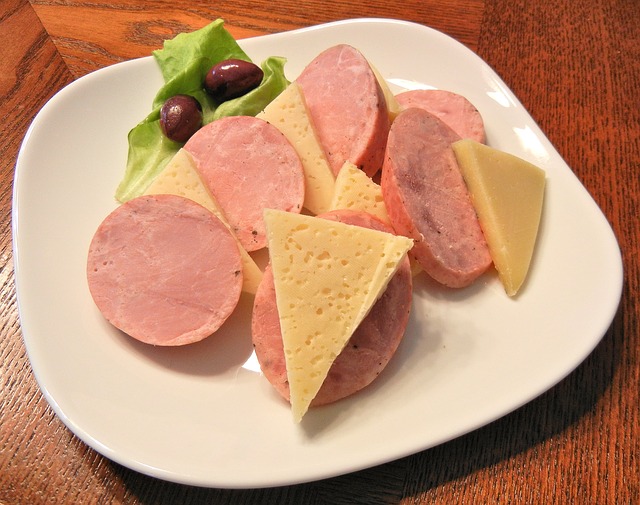
Fresh or smoked types of meat sausages originated from Poland.
This term refers to all types of pork, chicken, lamb, beef, turkey, or veal sausages, including all smoked, cooked, and dried varieties.
In the United States, kielbasa is most commonly a seasoned and smoked U-shaped kind of sausage.
Kilawin
Kilawin or Kilawing Tuna is a Filipino dish wherein cubed fresh tuna is mixed with vinegar, lemon, or calamansi and chilled until the fish is gradually cooked by the vinegar or citrus juices.
Tuna kilawin is considered an appetizer in the Philippines – it is also a popular pulutan amongst many beer-loving individuals.
Kimchi
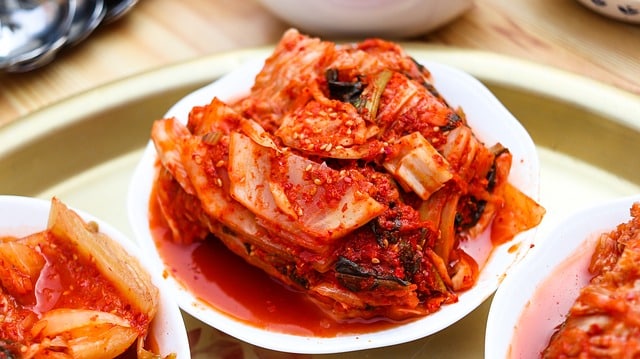
Traditional Korean fermented cabbage dish, made in many varieties.
It is heavily seasoned with salt, chili, garlic, and traditional Korean spices.
Kimchi is considered a staple food in Korea, served as a side dish to any other meals or cooked in different soups and stews.
King Crab
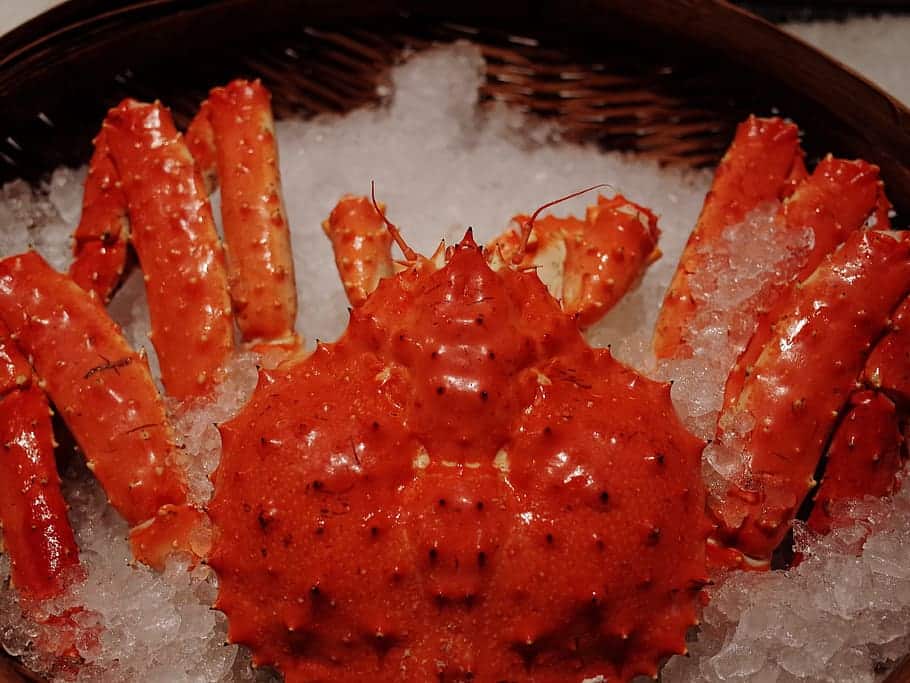
A group of more than 120 species of giant crustaceans within the family Lithodoide.
They can weigh from 10 to 25 pounds, males being larger than females.
They are most often dark red or brown-blue.
The most consumed is red king crab, native to the Pacific Ocean and one of the largest king crabs.
Kingfish
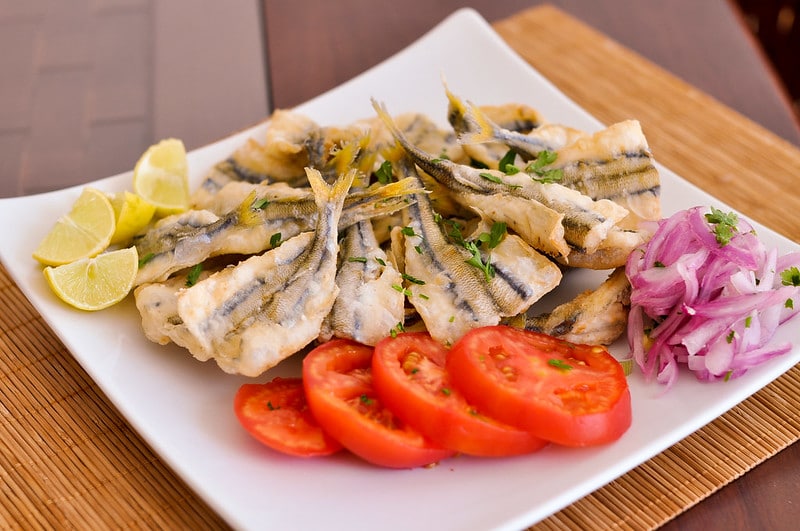
The Kingfish is a medium-sized fish, typically encountered from 5 to 14 kg (30 lb), but is known to exceed 40 kg (90 lb).
The entire body is covered with very small, hardly visible, loosely attached scales.
The first (spiny) dorsal fin is entirely colorless and is normally folded back into a body groove, as are the pelvic fins.
The lateral line starts high on the shoulder, dips abruptly at mid-body, and then continues as a wavy horizontal line to the tail.
Coloration is olive on the back, fading to silver with a rosy iridescence on the sides, fading to white on the belly.
Fish under 5 kg (10 lb) show yellowish-brown spots on the flanks, somewhat smaller than the spots of the Atlantic Spanish mackerel, Scomberomorus maculatus.
Its cutting-edged teeth are large, uniform, closely spaced, and flattened from side to side.
These teeth look very similar to those of the bluefish, Pomatomus saltatrix.
Kit Kat
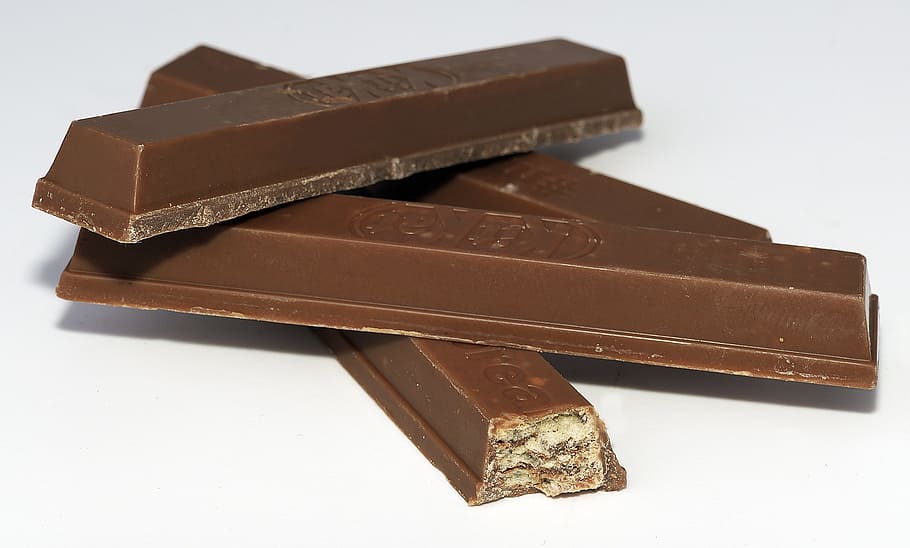
Kit Kat is a chocolate-covered wafer bar confection produced globally by Nestlé, except in the United States, where it is made under license by the H.
B.
Reese Candy Company, a division of the Hershey Company.
Kit Kat was created by Rowntree of York, United Kingdom, which was acquired by Nestlé in 1988.
The standard bars consist of two or four pieces composed of three layers of wafer, separated and covered by an outer layer of chocolate.
Each finger can be snapped from the bar separately.
There are many flavors of Kit Kat, including milk, white, and dark chocolate.
Kiwano
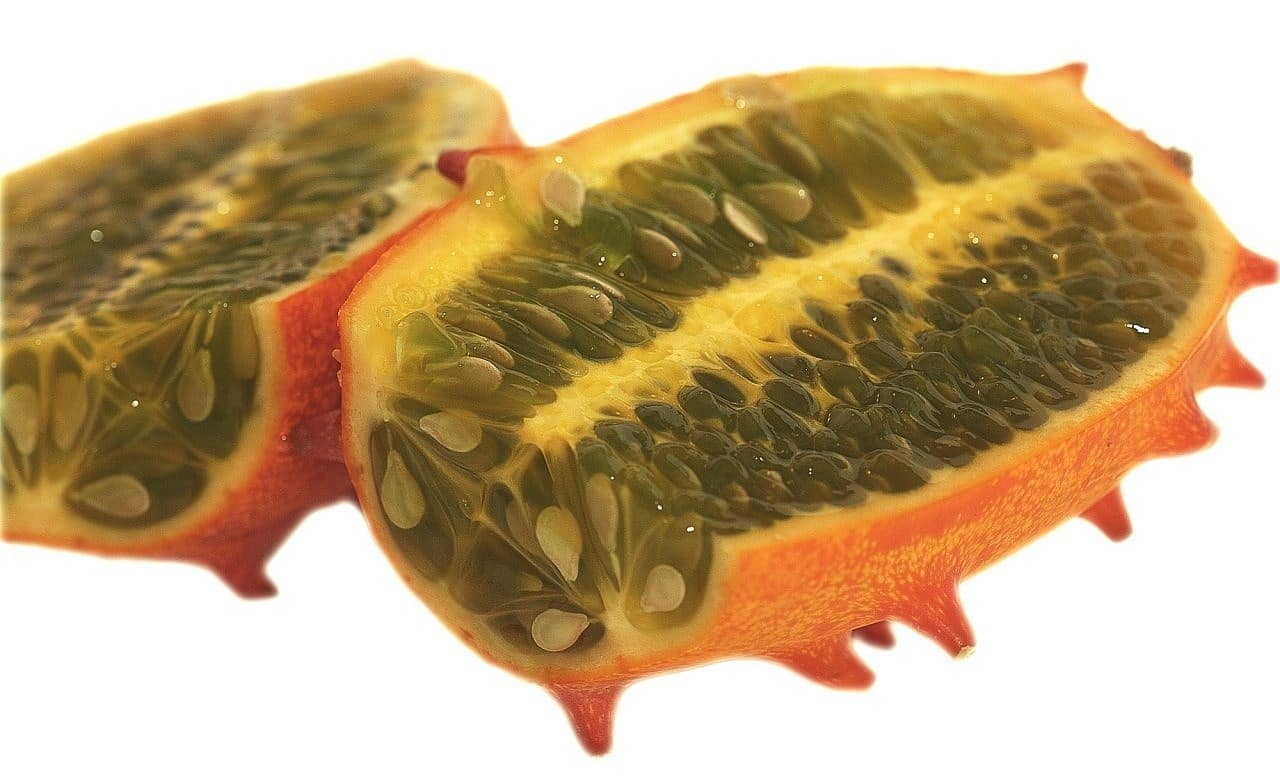
Exotic fruit in the family Cucurbitaceae (family of cucumbers, squashes, and melons), known for its distinctive thorns resembling small horns.
This is why it is also known as the horned or spiked melon.
Inside its vibrant orange skin is a juicy flesh full of seeds, similar in appearance to passionfruit.
It has a very refreshing, fruity flavor, often compared to cucumber or citrus fruits.
Kiwano is native to central and south Africa, but it is also cultivated in the United States, Europe, New Zealand, and Australia.
Kiwi
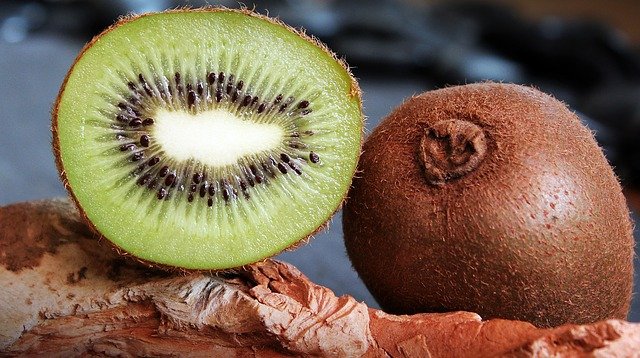
Kiwi or kiwifruit is a small oval fruit covered by fuzzy brown skin.
Its vibrant green flesh is soft and juicy, and it has numerous small black edible seeds.
The flavor of this fruit is sweet to sour and slightly tart.
Kiwi is a berry in the genus Actinidia, cultivated in a large number of species in warm climates around the world.
It is native to eastern and central China, where half of the global kiwi production comes from.
Kiwiberry
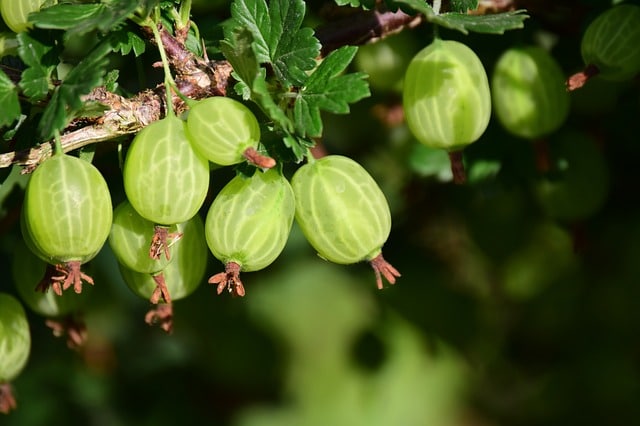
Small, berry-sized fruit resembling a kiwi.
But unlike kiwis, kiwiberries have smooth, hairless skin that is edible.
This fruit is also known as Siberian gooseberry or Siberian kiwi.
It is originally grown in Japan, China, Korea, and Russia.
It can be green, brown, or purple on the outside, but sliced open it looks exactly like a kiwi – green-colored, soft, and covered with small black seeds.
Kiwiberries are a rich source of vitamins C and E, fiber, magnesium, and potassium.
Knish
Baked dough filled with cheese, potatoes, or buckwheat groats.
This is a traditional Jewish dish, native to Central and Eastern Europe.
The first time knish was made in the United States, was in New York at the beginning of the 20th century.
Knish is consumed as a snack, sometimes deep-fried rather than baked, and filled with beans or spinach instead of the original fillings.
Knödel
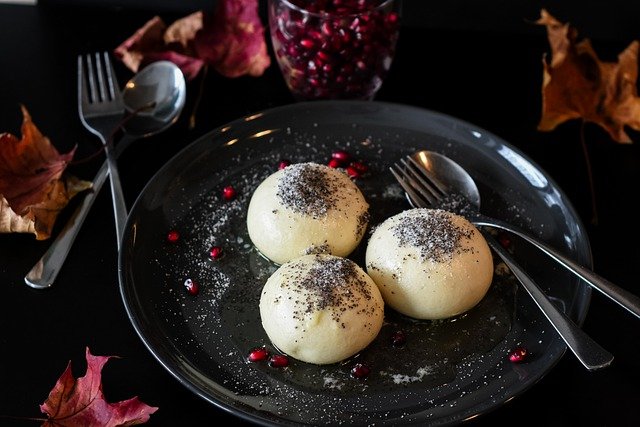
Sweet or savory dumplings made from flour or potatoes, or a mixture of both.
Sometimes, they include filling or whole fruit like plum or apricot inside.
Sweet varieties are typically coated in cinnamon sugar or breadcrumbs, immediately after boiled.
They are served as a dessert, while the savory ones are boiled in soups or served as a side dish.
Knödels are traditional meals of East European and Central European cuisines.
Kohlrabi
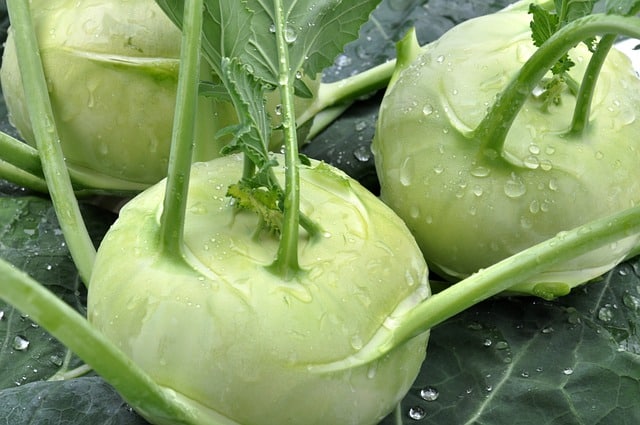
Kohlrabi or German turnip is a pale green vegetable found in the same family as wild cabbage.
In its shape and taste, it resembles a turnip.
Two layers that cover the stem are peeled before eating or cooking so that the stem can be sliced.
It is eaten in salads, steamed or cooked.
It has a mild and sweet flavor.
This cruciferous vegetable is especially high in vitamin C.
One cup of kohlrabi provides 93 % of the required daily dose of this vitamin.
It is also rich in B vitamins, potassium, manganese, and fiber.
Korean Radish
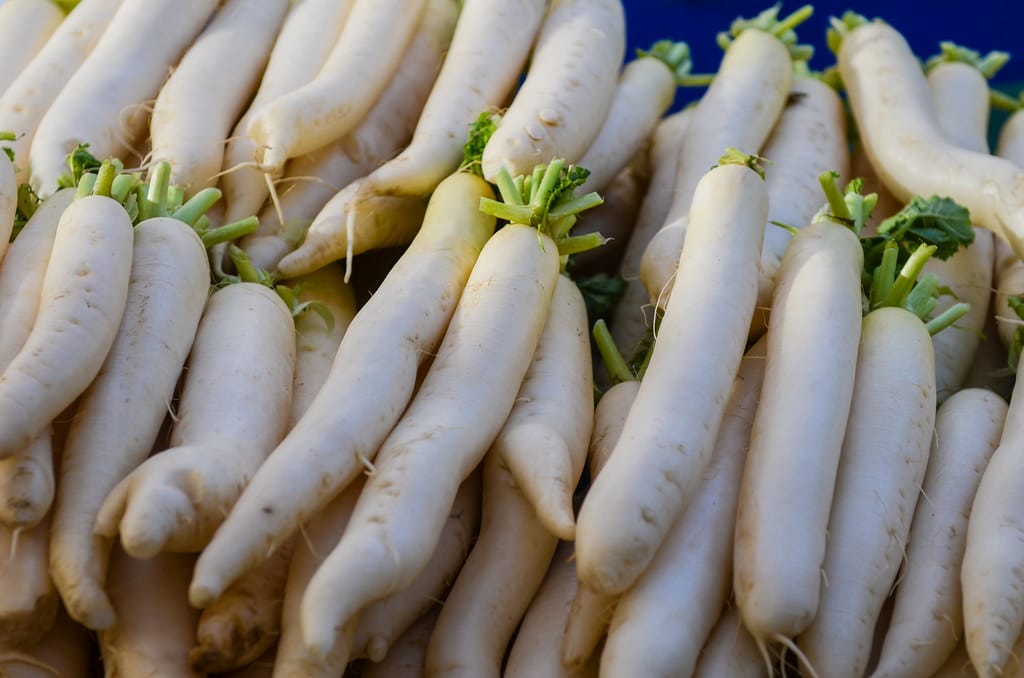
A type of short white radish, originally cultivated in Korea.
It has a white taproot, with a distinctive light green top, and soft green leaves starting from it.
The flavor of Korean radish is peppery with a hint of sweetness.
It is used as a vegetable in traditional Korean meals like kimchi, soups, stews, and rice cakes.
Koshihikari
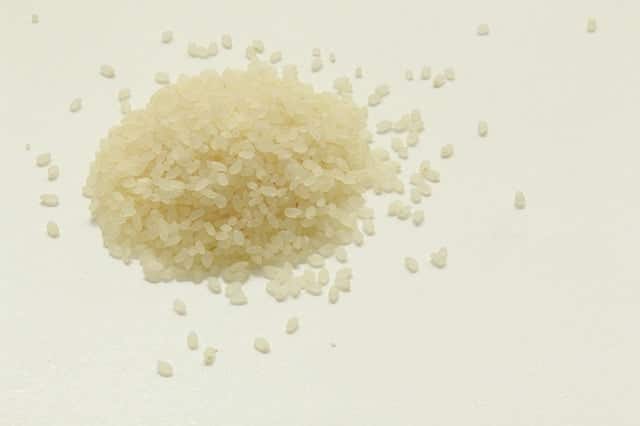
Japanese short-grain white rice.
It was developed in the 1950s as a premium type of rice.
It has a soft, sticky, and chewy texture, which is why it is the most preferred Japanese rice.
It is used in sushi, sashimi, and many other traditional recipes of Japanese cuisine.
Outside of Japan, koshihikari is cultivated in the United States and Australia.
Kudzu
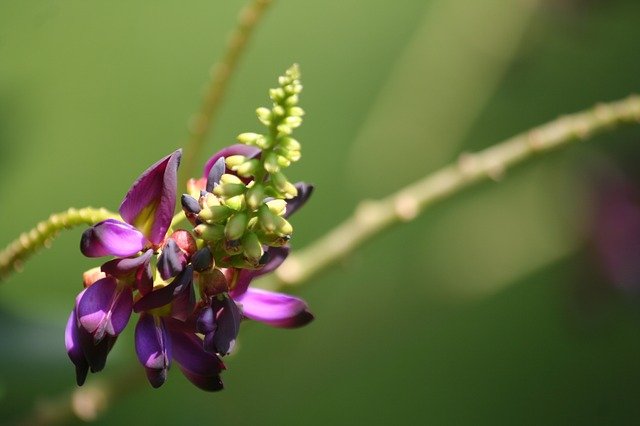
Kudzu is a fast-growing, woody, somewhat hairy vine that may grow to a length of 18 meters (60 feet) in one season and features a substantial taproot.
It has large compound leaves with three broad leaflets with hairy margins.
The plant bears long racemes of late-blooming reddish-purple flowers and flat hairy seed pods.
The plant spreads vegetatively with stolons and rhizomes that root to form new clonal plants.
Kugel
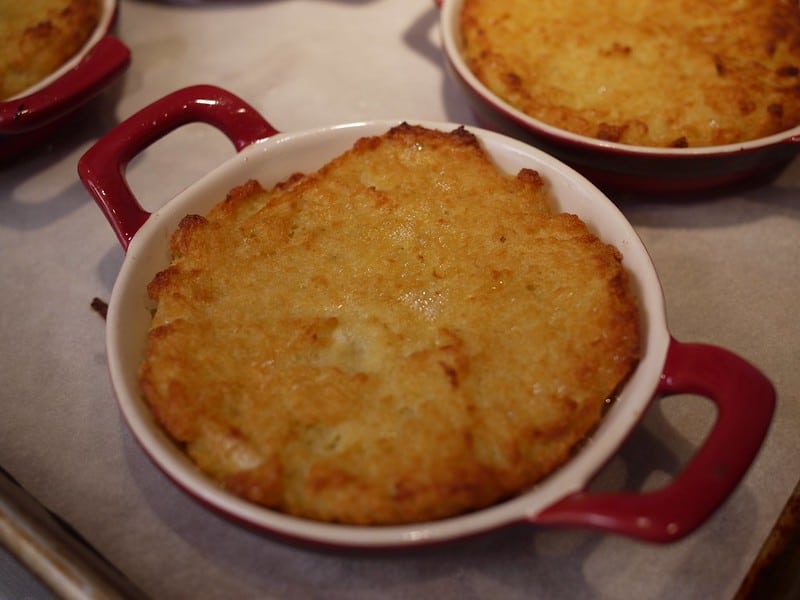
Baked casserole composed of eggs with noodles or potatoes.
It is traditionally made from cooked noodles combined with eggs and creamy sauce and baked in the oven.
The sauce may include sour cream, cottage cheese, sugar, vanilla, and other spices, so it is typically slightly sweet.
This is a Jewish dish, originally created in Central Europe.
It is named after the German word ‘’kugel’’ translated as ‘’ sphere, ball’’, after the appearance of the original version of kugel.
Kugelhupf
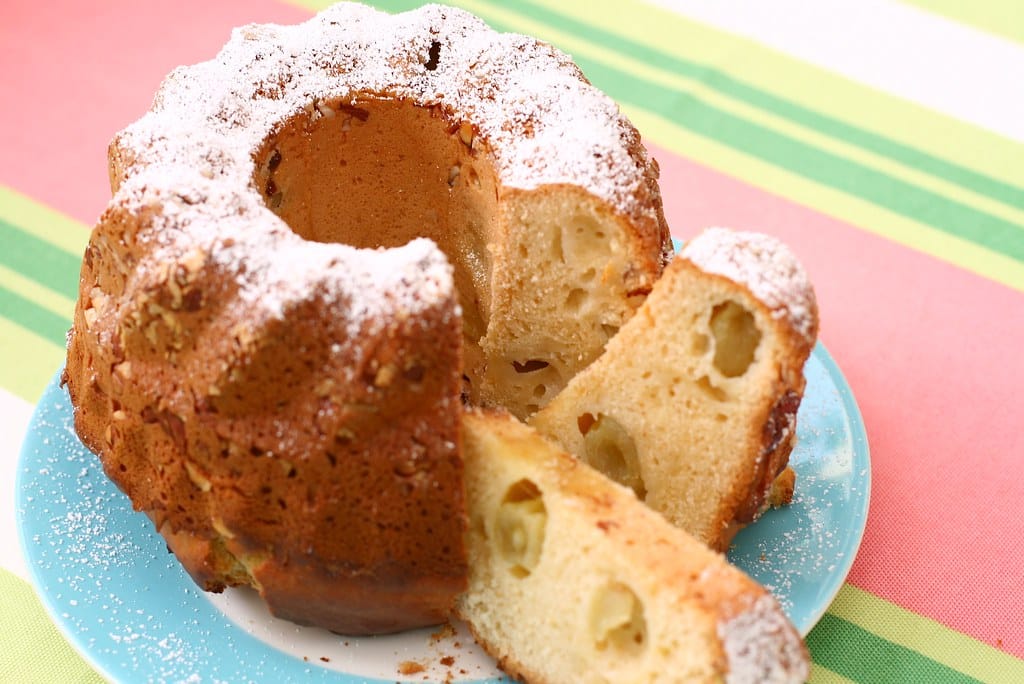
Kugelhupf, known also as Gugelhupf and kouglof, is a soft and airy cake, similar in shape to American bundt cake which was inspired by this traditionally European dessert.
It is made from yeast dough baked in high bundt-shaped molds.
It can contain nuts, raisins, and other dried fruit.
A popular variety is a Kugelhupf marble cake, made from a blend of chocolate and vanilla batter.
Kugelhupf cake is served dusted with powdered sugar or drizzled over by chocolate or caramel sauce.
Kuminost Cheese
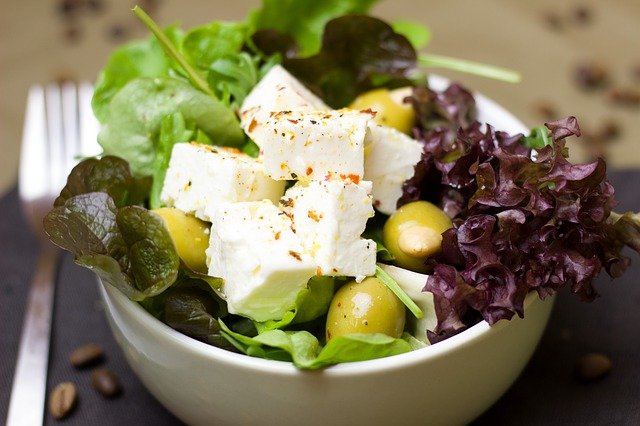
Norwegian semi-firm cheese flavored with cumin and cloves, which give this mild cheese a spicy, nutty aroma.
It is produced from whole or skimmed cow’s milk, shaped in wheels, and allowed to fully mature, which often takes about three months.
It has a creamy pale yellow texture and a thin waxed rind.
In Norway, kuminost cheese (which is translated as ‘’cumin cheese’’) is also called Nøkkelost (‘’key cheese’’).
Kumquat
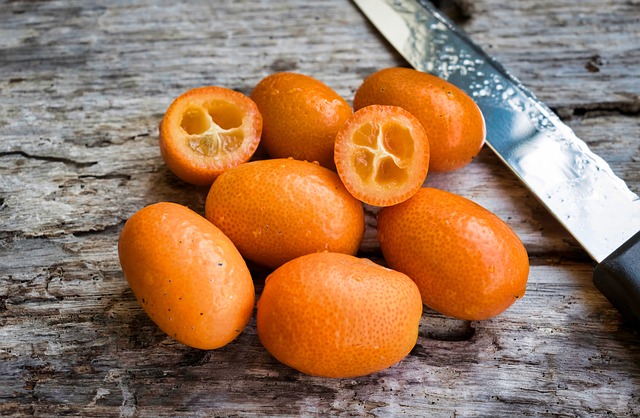
A small citrus fruit, native to China.
It appears as a small version of orange, with its round shape and an orange-colored rind.
Its name comes from the Chinese word ‘’ kamkwat’’ meaning ‘’golden mandarine orange’’.
Kumquats are cultivated across Asia, Europe, and North America.
Their flesh is bitter in flavor, while the edible skin is sweeter and tastier.
They can be found candied, pickled, or in preserves such as chutney or marmalade.
Kung Pao Chicken
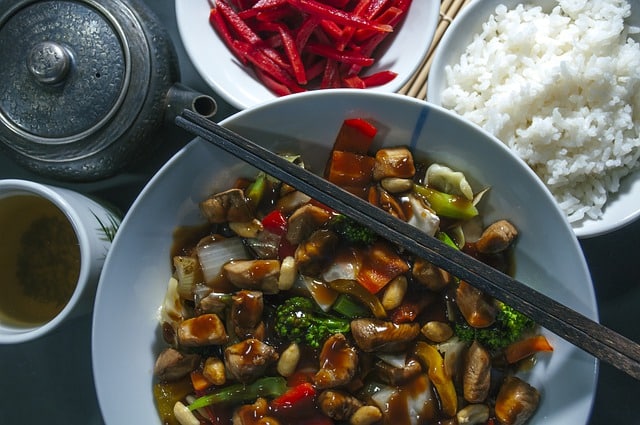
Stir-fried dish of Sichuan cuisine, composed of boneless pieces of chicken, chopped leek, chili peppers, and peanuts.
This spicy dish is often seasoned with Sichuan pepper, a traditional spice found in this style of Chinese cuisine.
Many varieties of the original recipe use tofu, shrimp, or fish instead of chicken and substitute leek with garlic and onions.
Kvass
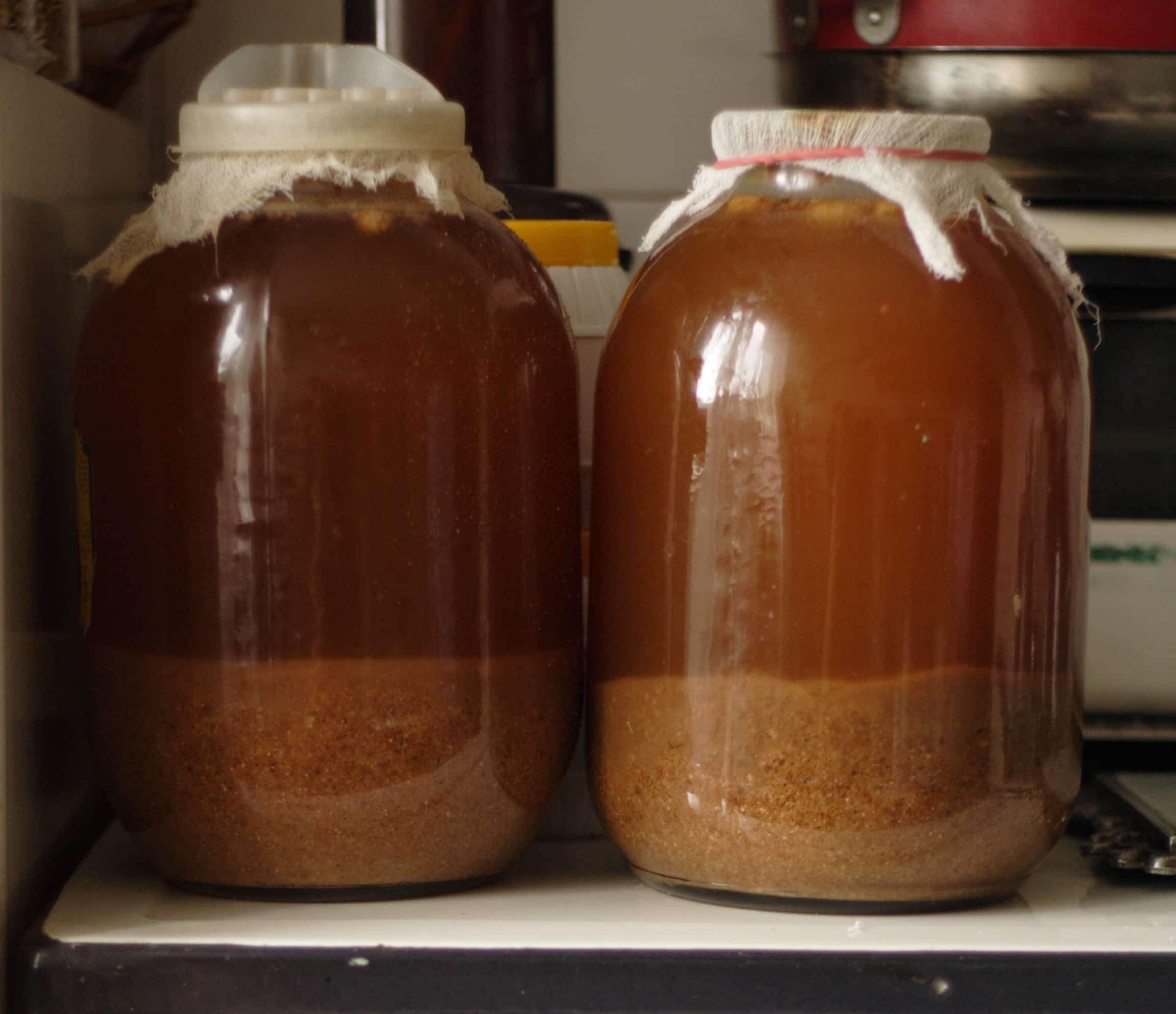
Kvass is a traditional fermented Slavic and Baltic beverage commonly made from rye bread, which is known in many Central and Eastern European and Asian countries as “black bread”.
The colour of the bread used contributes to the colour of the resulting drink.
Kvass is classified as a “non-alcoholic” drink by Ukrainian, Belarusian, Russian, Latvian, Lithuanian, Polish, Hungarian, Serbian, and Romanian standards, as the alcohol content from fermentation is typically low (0.5–1.0% or 1–2 proof).
It may be flavoured with fruits such as strawberries or raisins, or with herbs such as mint.
Kvass is especially popular in Russia.
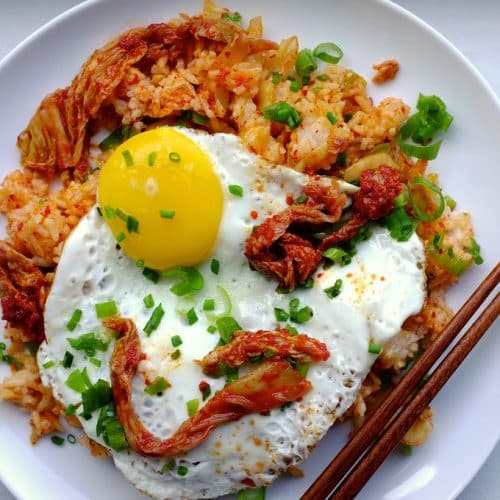
Kimchi Fried Rice Recipe
Equipment
- 1 Pan
- 1 wooden spoon
Ingredients
- 3 cups steamed rice
- 1 cup kimchi chopped
- ¼ cup juice kimchi
- ¼ cup water
- 2-3 tablespoons gochujang
- 3 teaspoons sesame oil toasted
- 1 teaspoon vegetable oil
- 1 cup green onion chopped
- 1 tablespoon sesame seeds roasted
- 1 sheet seaweed roasted and shredded gim
Instructions
- Heat up a pan.
- Add the vegetable oil.
- Add the kimchi and stir fry for 1 minute.
- Add rice, kimchi juice, water, and gochujang.
- Stir all the ingredients together for about 7 minutes with a wooden spoon.
- Add sesame oil and remove from the heat.
- Sprinkle with chopped green onion, roasted gim, and sesame seeds.
- Serve right away
